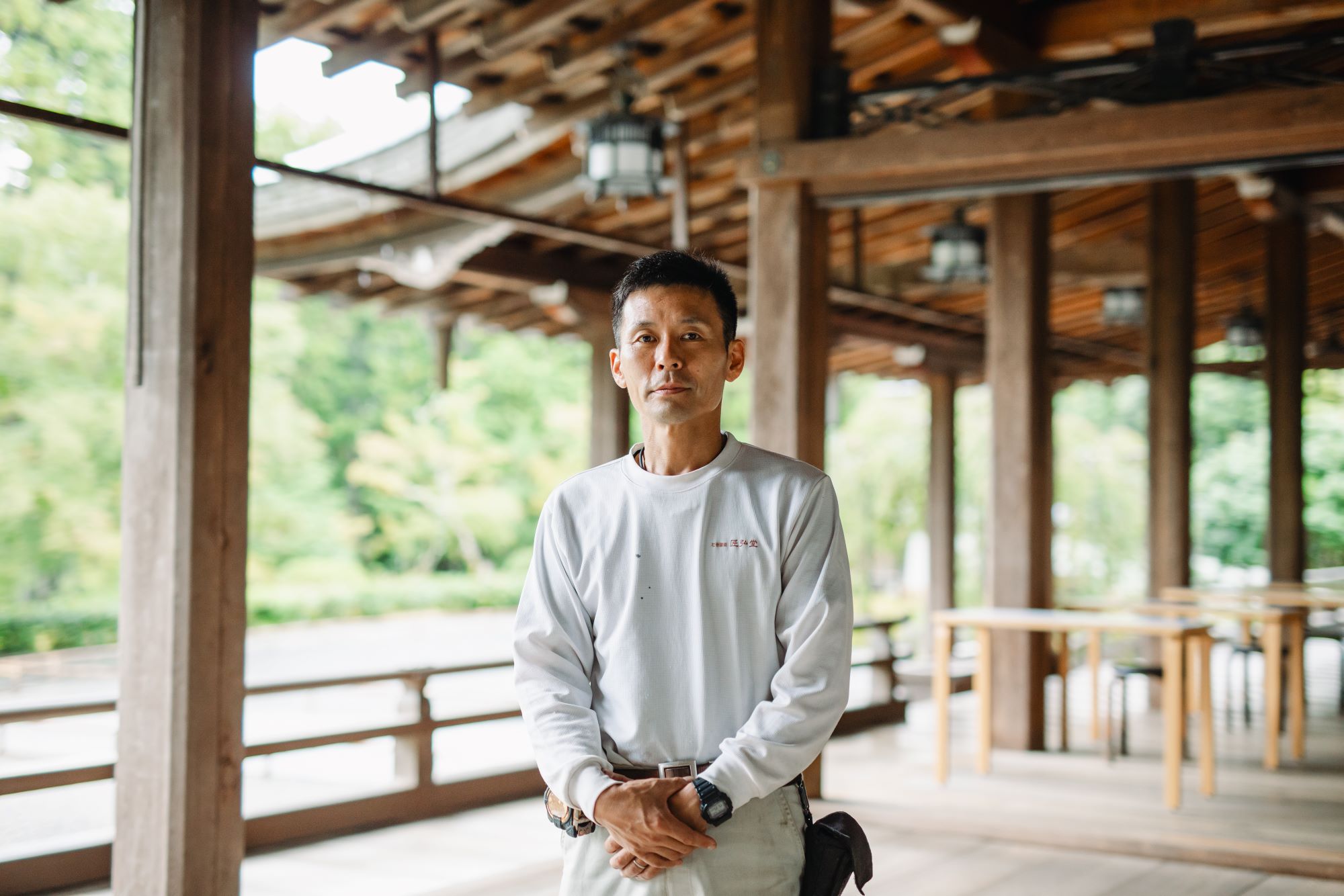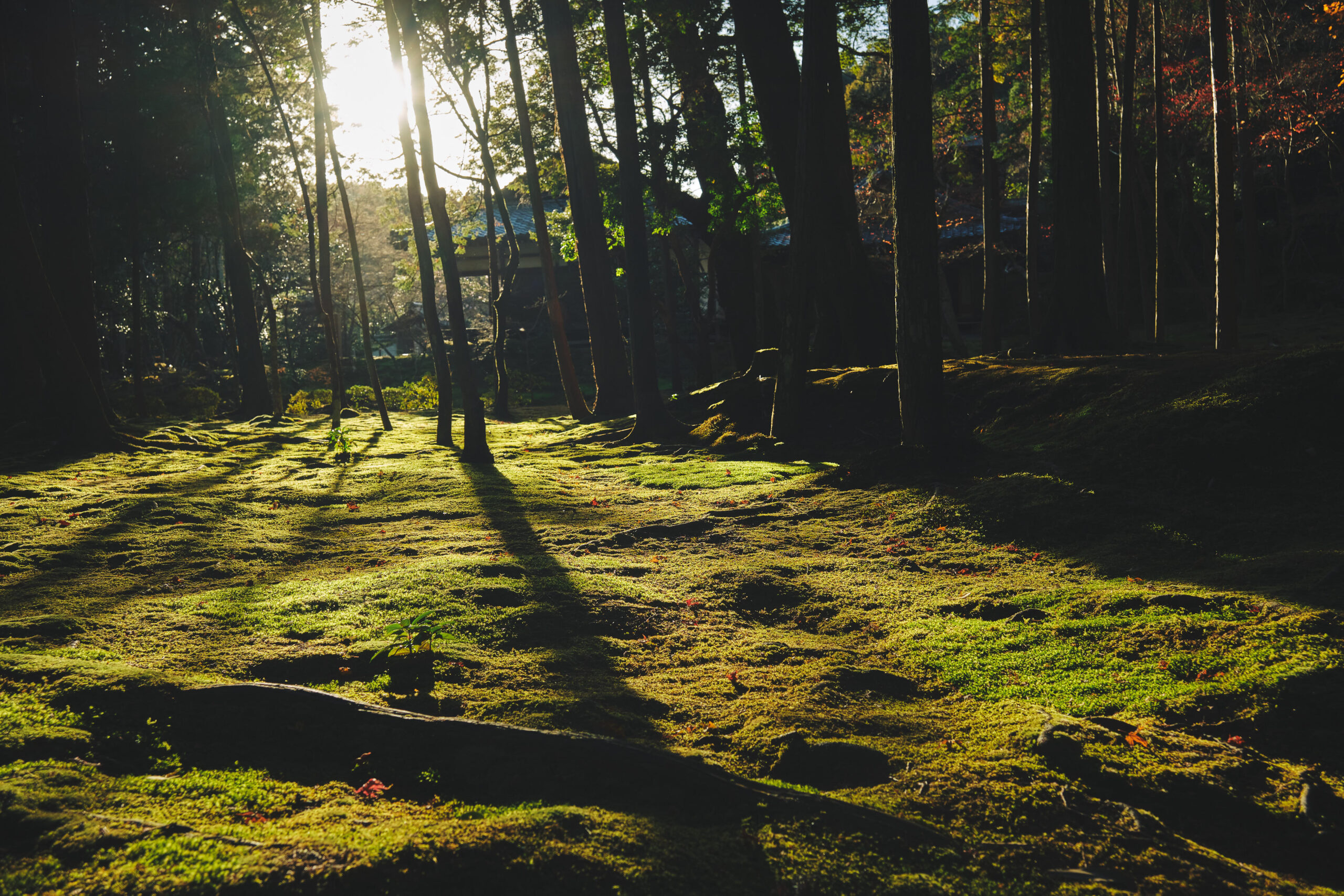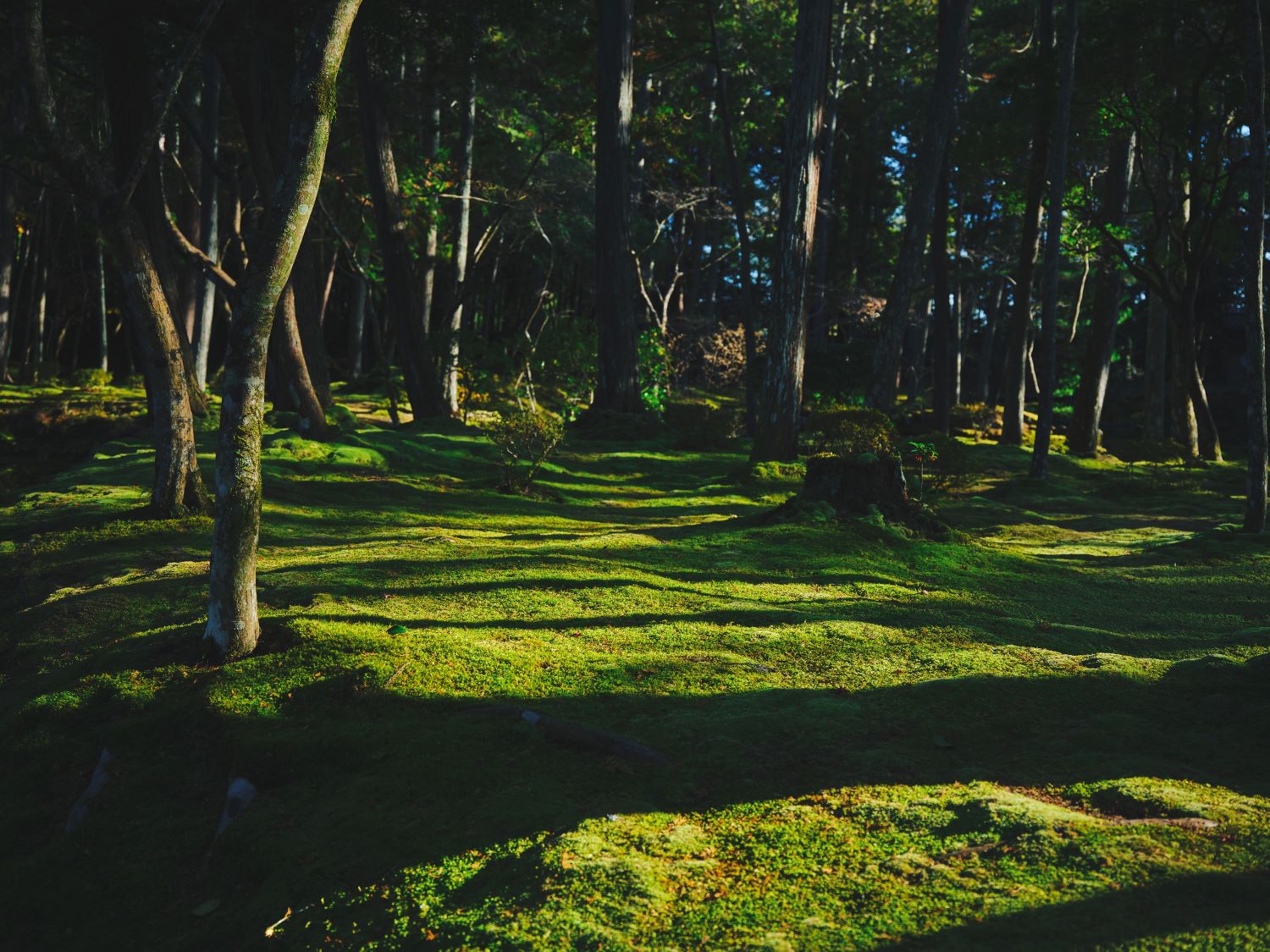2024.10.30
People Preserving Saihoji for Future Generations “A Canal Connecting Us to the Past”
Uncovering the wisdom and ingenuity of our ancestors through the restoration of a canal from 700 years ago:
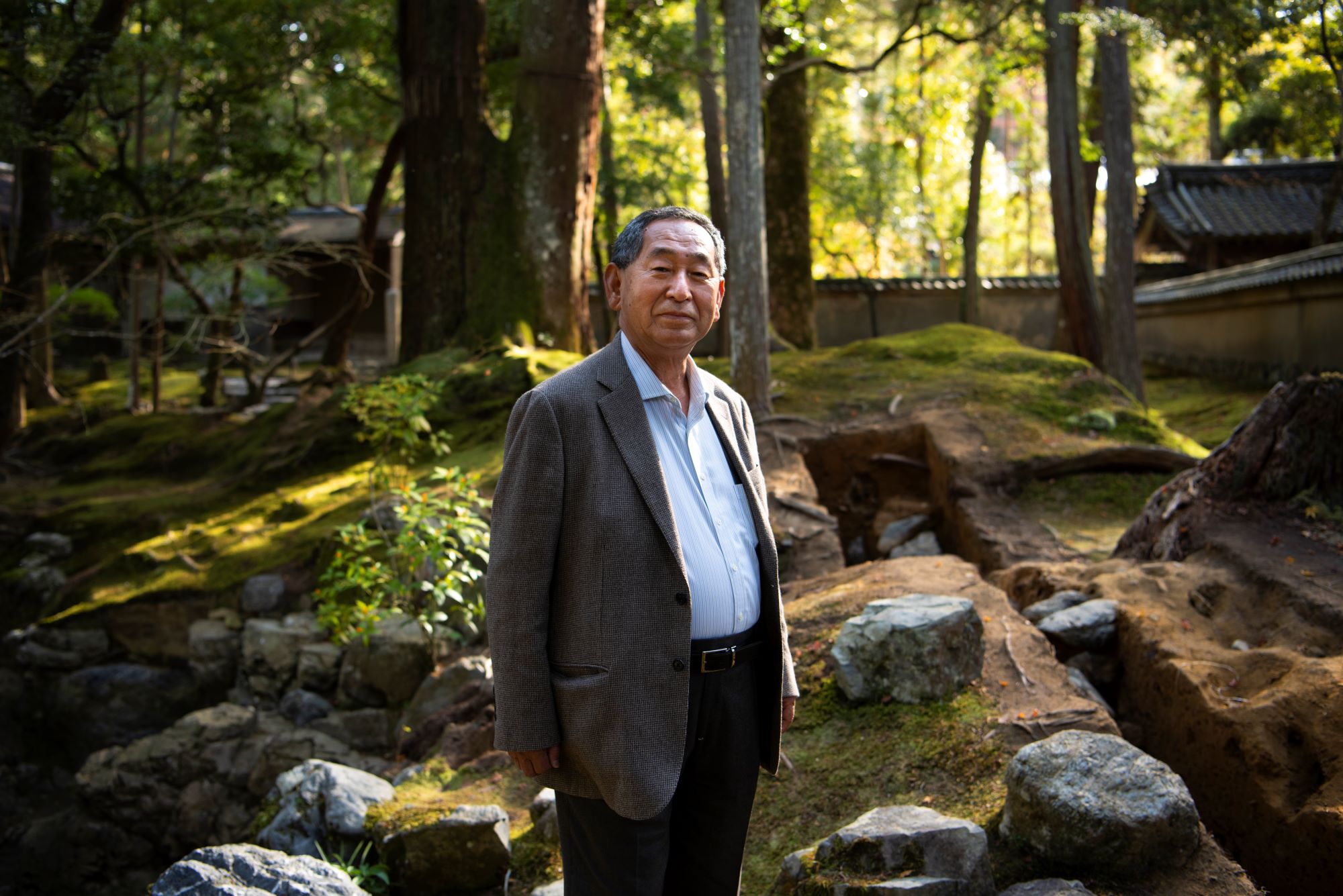
Saihoji Temple is known worldwide for its “Moss Garden.” In order to welcome visitors each day, many people support the temple and its garden with their expert work. In this series, we spotlight the work of those involved in Saihoji, and we will explore what it means to support culture and connect to history.
The garden at Saihoji was designed by Muso Kokushi, who was both a Zen monk of the Rinzai Sect and a master gardener. In 2031, the temple will celebrate the 1,300th anniversary of its founding. It is currently engaged in a project to restore a canal that is thought to have existed when the garden was first created. The fourth installment of this series will feature Professor Amasaki Hiromasa, the chairman of the committee for the canal restoration project. We spoke with him about the significance of the project and what makes the garden at Saihoji appealing.
Amasaki Hiromasa
Landscape architect, garden designer, professor emeritus at Kyoto University of the Arts, and honorary director of the Research Center for Japanese Garden Art and Historical Heritage. Born in 1946. After graduating from the Kyoto University Faculty of Agriculture, Professor Amasaki apprenticed himself to a landscaping contractor in Kyoto, where he gathered experience in many different work settings before he set up his own business. At the same time, he has spent many years teaching a great number of students about garden design and the history and culture of landscape gardening. As a subject matter expert, he has also led the conservation and restoration of cultural property gardens throughout Japan. In 1992, the Japan Institute of Landscape Architecture presented him with an award, and in 2014, the City of Kyoto recognized him as a Person of Cultural Merit.
Carrying out studies and exchanging opinions with experts
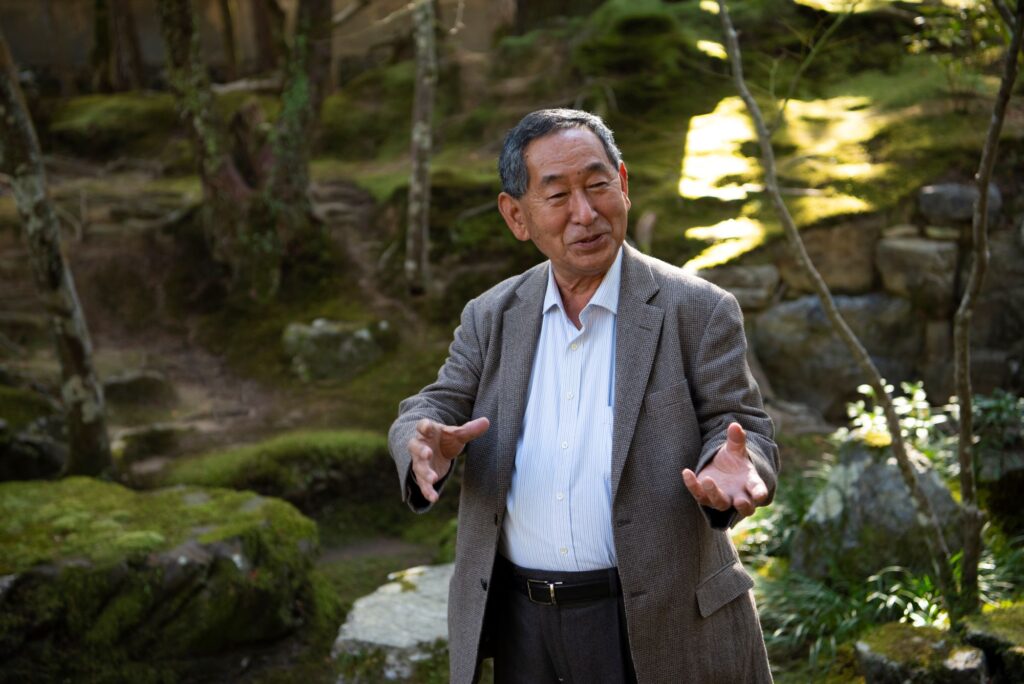
ー Professor Amasaki, what sparked your interest in landscaping?
I originally went to graduate school at Kyoto University to study forest ecology. That got me interested in landscaping, so I apprenticed myself to a landscaping contractor in Kyoto. It must have been about seven years after I started my training when the university asked me if I would be interested in teaching a practical course. I became independent and started teaching at the same time as landscaping.
ー How did you come to be involved in this project?
In 2021, Kyoto City’s Cultural Properties Protection Section carried out an excavation survey to look into restoring the canal at Saihoji. They showed me the survey as well. A committee was then established to begin full-scale restoration work in 2023.

Even the best scholar can make a poor judgment, so in order to minimize the risk of such mistakes, they put together this committee to examine the opinions of several experts from multiple perspectives. While I offer my opinion from a landscaping perspective, archaeologist Suzuki Hisao presents his views on the excavation, and historian Shimosaka Mamoru shares his knowledge of the historical literature. We work together in this way to move the project forward. A total of 17 people attend the committee meetings, including representatives from the Agency for Cultural Affairs, Kyoto Prefecture, Kyoto City, design supervisors, building contractors, and, of course, Saihoji Temple.
ー Can you give us a summary of the canal restoration project and its current status?
We have two good sources for information about the canal that once flowed through the garden. One is a memoir written by an emissary from the Joseon Dynasty in Korea who came to Japan in the first half of the 15th century and visited Saihoji Temple. The other is the Rakugai Meisho Zu Byobu, a 16th century painted screen depicting famous places around Kyoto. We don’t have many documents or materials besides these. Many were lost in the Onin-Bunmei War (1467–1477), natural disasters, and other calamities. However, we do have a couple of big clues as to how the canal used to look. It was partially depicted on a survey map made by a modern-era researcher, and if you go to the garden, you can see a depression in the ground that looks like it could be the remains of the canal.
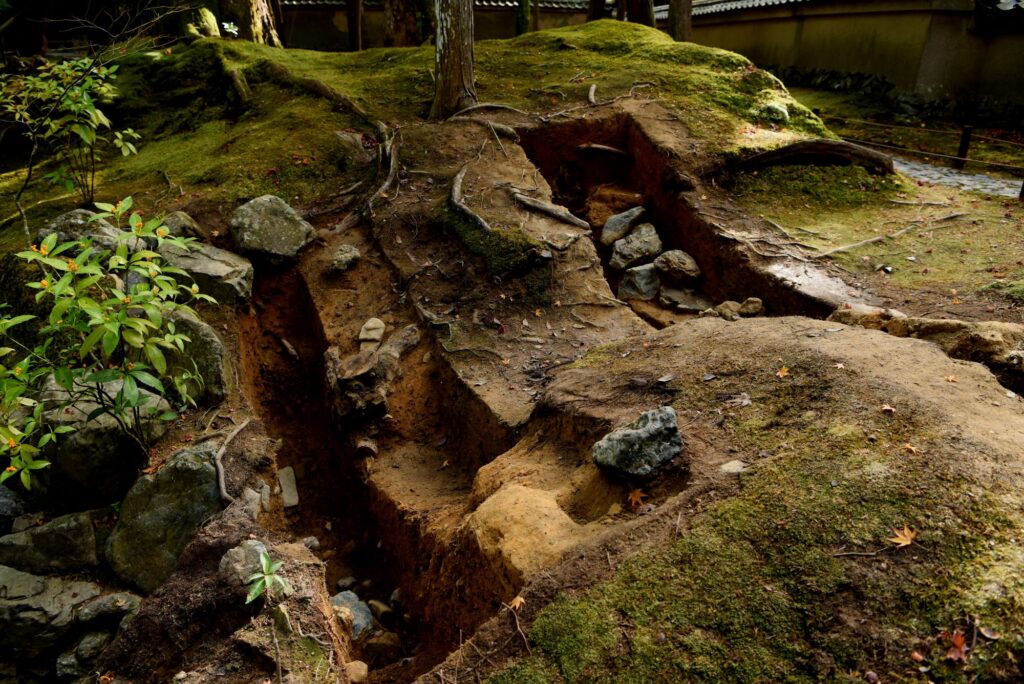
An excavation survey conducted by the city of Kyoto revealed structural remains from two periods—medieval and early modern—that point to the prior existence of a canal about 30 meters long. The restoration work will continue based on the results of this survey, aiming for completion in fiscal 2025.
Reflecting on the passage of time and the work of the craftsmen
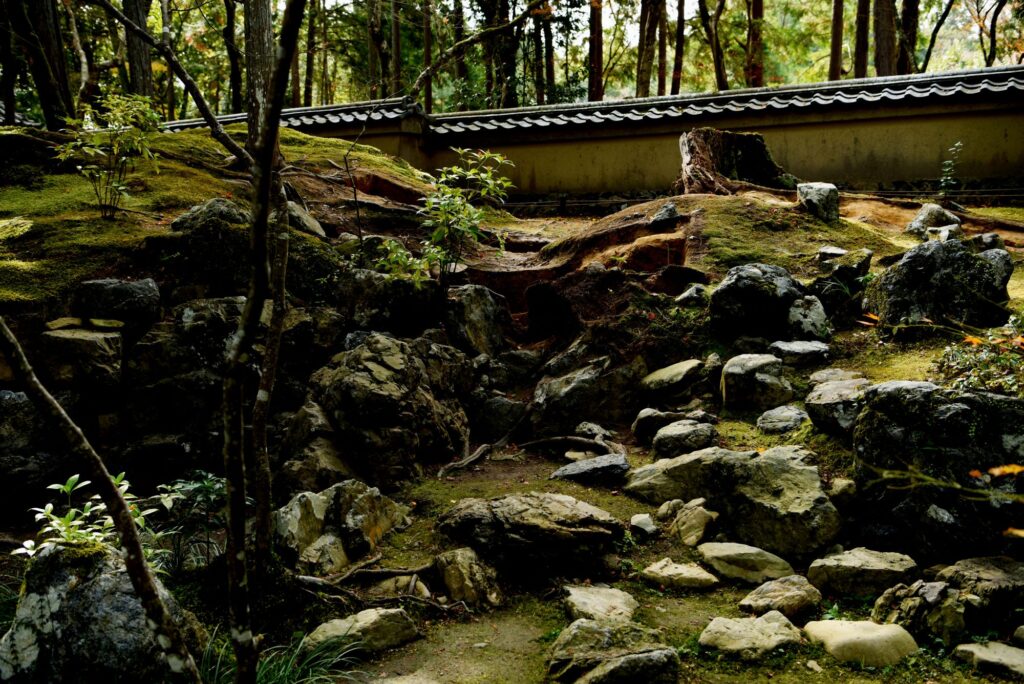
ー What difficulties are involved in restoring this canal?
The Saihoji garden has fallen into disrepair and been restored again several times over the course of its history. Today, the entire surface of the garden is covered in about 120 varieties of moss. However, it seems that when the garden was originally made, it was covered in white sand. Moss came to cover the garden following its repeated destruction by war and flooding. Through the dedicated efforts of many people, this mossy garden has been handed down to us in the present day. Although Muso Kokushi created the original model for the garden, it will be important to take into consideration the contributions of all the other people who came after him and decide which canal—or in other words, the canal from which period—to restore.
Once the restoration work is complete, we are aiming for the overall landscape of the garden to look like the garden that Muso Kokushi created in the medieval period. However, when it comes to the flow of the water, we need to take the topography and other feasibility factors into consideration, so it will probably resemble the canal of the early modern period. The difficult part of the restoration work is that each of these periods is distinct, so we have to approach the work from different angles and bring everything together into a single form.
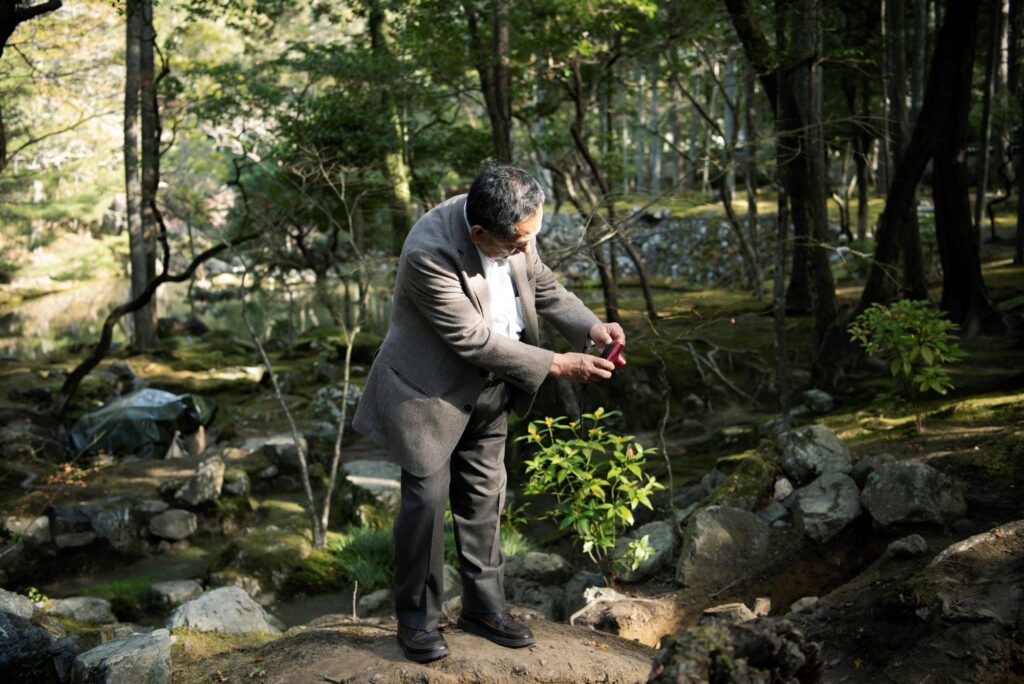
ー What part of the restoration process do you find most interesting?
The garden was created by craftsmen of the time. As we excavate, we gradually learn more about the construction process, from the foundation to the structure and the materials used. However, the purpose of excavating is to find evidence we can use in our restoration and maintenance work, so we must be careful and exercise good judgment to avoid damaging the remains. We hold discussions based on the research of those who came before us and unravel each mystery through actual excavation. It leads us to reflect on the passage of time and the work of the craftsmen. It’s like opening a time capsule. You cannot begin to describe how interesting this is with logic alone.
ー What is the significance of this canal restoration project?
As one of the researchers, I find it both meaningful and fascinating to uncover the wisdom and ingenuity of our ancestors. However, what is most important in this project is how the people of Saihoji feel about it. The garden has been passed down to them over generations spanning hundreds of years. How do they want to pass it on to the next generations? What are the significant elements of the garden as a place of faith, and how do they want to communicate these elements? These are questions I want to keep in mind before we even begin the work of restoring and shaping the garden.
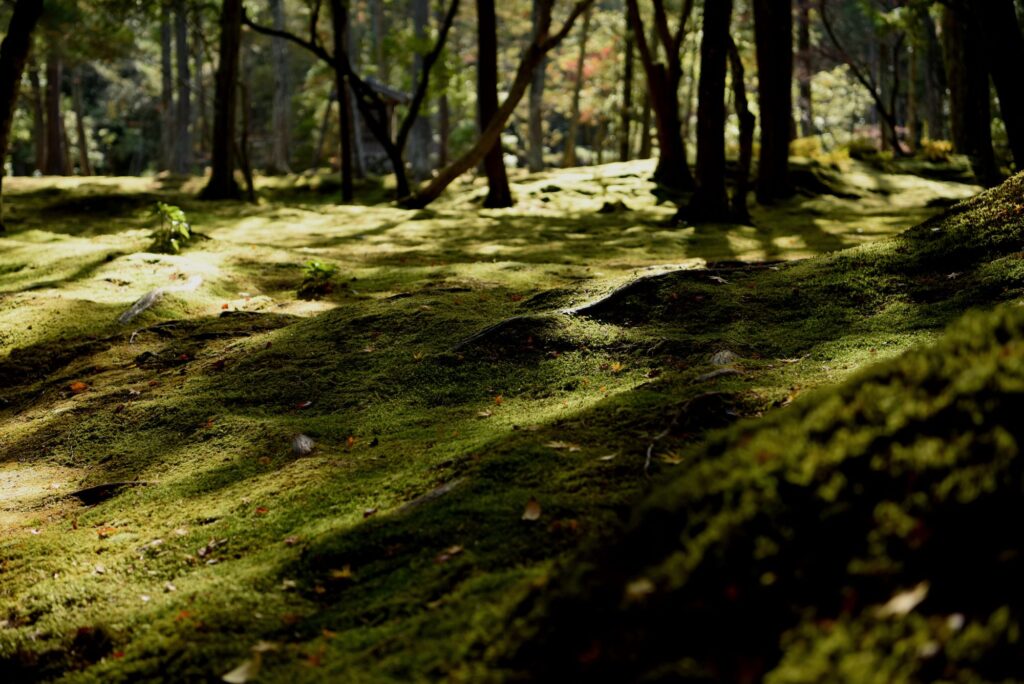
In addition, restoring the canal is not simply about improving the landscape. The moss at Saihoji seems to have weakened in recent years, as a result of global warming. Once completed, the canal will draw water from the river, bring moisture to the garden and help preserve the moss.
Passing on centuries’ worth of ideas and skills
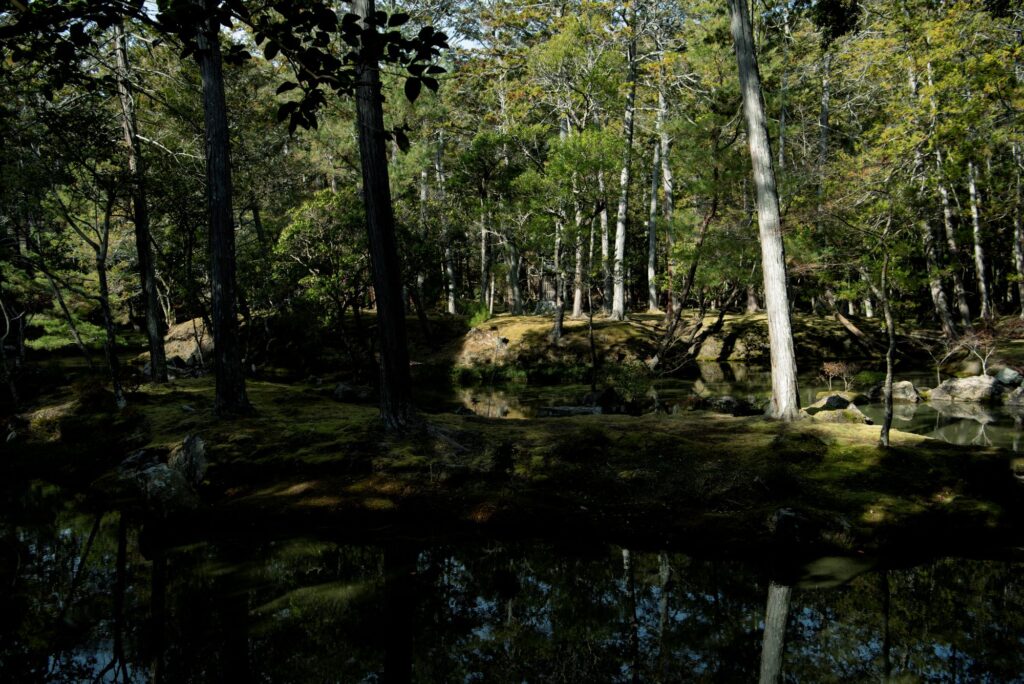
ー Had you visited Saihoji before joining the project?
It must have been around 50 years ago that I first visited Saihoji. The lower garden is built as a strolling garden surrounding the Golden Pond, while the upper garden is designed as a dry landscape (karesansui) garden. I remember being impressed by the way the garden blends into the natural surroundings. Saihoji is believed to have the oldest karesansui style garden in Japan. The term karesansui has existed since the Heian Period (794-1185), but it was only used to describe the stonework in the garden, and not the garden as a whole. Muso Kokushi developed the karesansui element into something that could encompass an entire garden. (The upper garden is usually closed to the public.)
In addition, until the Heian Period, landscaping usually consisted of trying to recreate natural landscapes to look exactly like they did in real life. Muso Kokushi, on the other hand, used his own unique methods to express the beauty of nature as he saw it. His ideas spread rapidly, and from then on, people began using their own sensibilities to create gardens.
All of these factors make the garden at Saihoji especially significant. Its creation marks one of the turning points in the history of landscaping.
ー What do you find beautiful about the garden at Saihoji?
The garden is of course beautiful for the splendor of its landscaping, the way it incorporates the environment of its location and in how it reflects the culture of its time. Besides these things, there is also beauty in the way it embodies the ideas of Muso Kokushi and presented new possibilities in landscaping.
I understand landscaping as an effort in collaborating with nature. In particular, I believe that Muso Kokushi had exceptional insight into nature. I am sure that to him, gardening and religious training were one and the same.
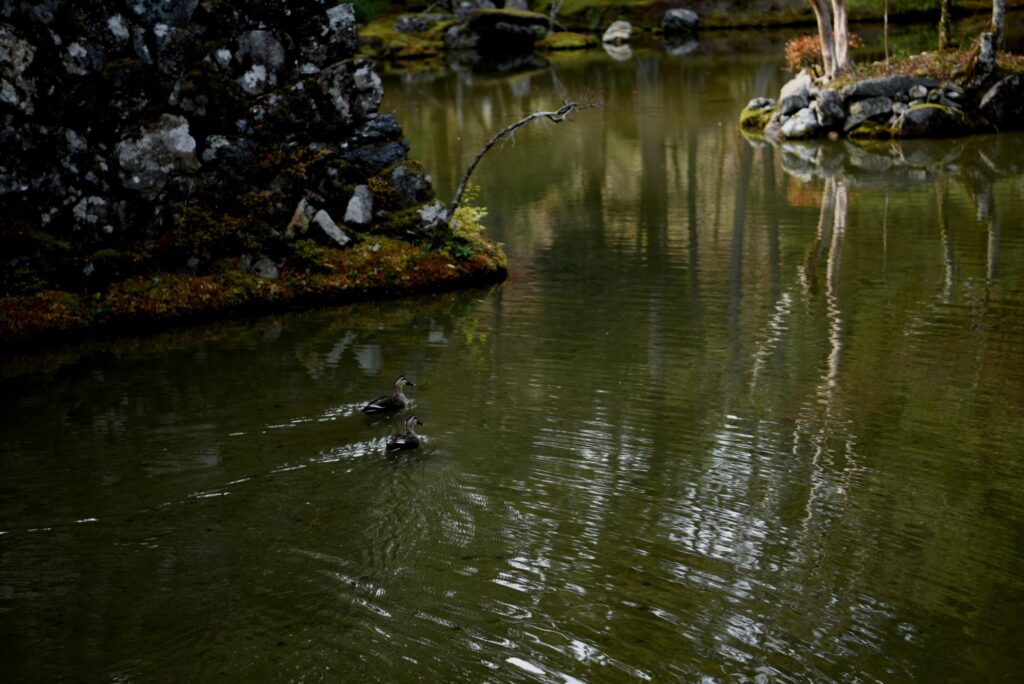
ー What is it about landscaping that appeals to you?
There is an element of pursuing the self. This is true not only of landscaping, but of all types of work where you make something. I believe that when we humbly devote ourselves to something and draw on all of our knowledge and ingenuity, we eventually all arrive at the same place.
We come to the realization that human beings are part of nature. That is what it means to live with nature. In that sense, I consider everyone involved in this project to be a companion sharing the same feeling.
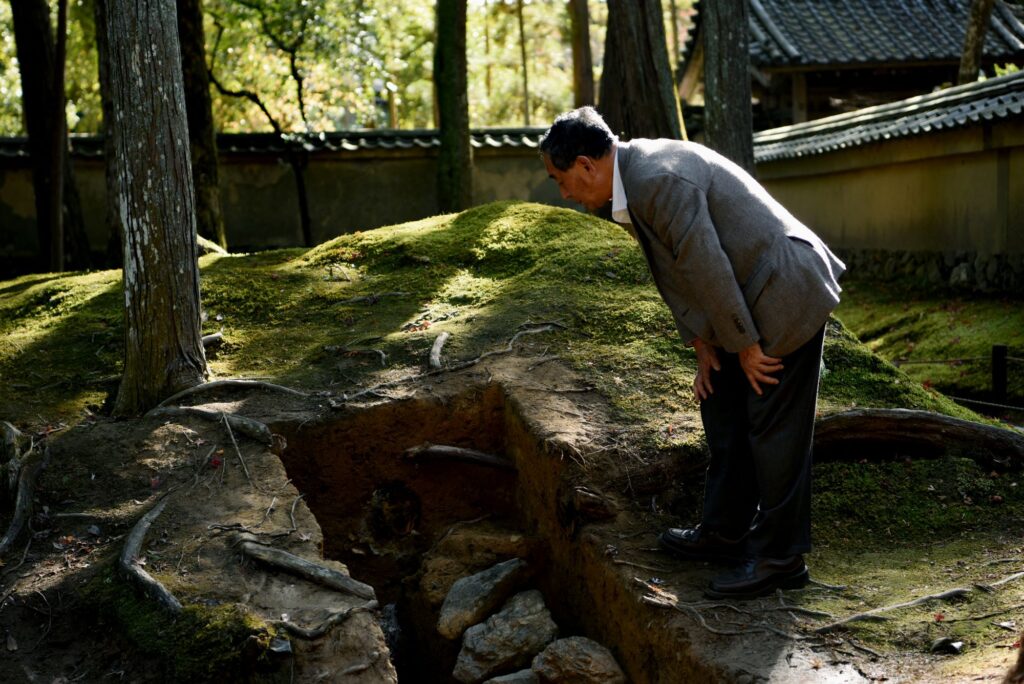
ー Finally, please tell us what you consider to be important in order to carry the garden at Saihoji Temple into the future.
It is important to think about both what is right before us and what remains slumbering beneath the surface.
In the course of carrying out our excavation survey, we sometimes encounter a kind of “sentiment” contained within the precious remains that tell us about the thinking and techniques of the time. To what extent can we respect and honor all of the people’s ideas and techniques that have been used here over the years? How can we live in harmony with nature? This project offers us a starting point to rethink these questions. We would be very happy if all visitors to the temple would take the time to “have a conversation” with the newly revitalized garden.
Edited by: MIYAUCHI Toshiki, TAWARAYA Ryusuke, HOSOTANI Kana
Written by: OGURO Keitaro
Photographed by: MOCHIZUKI Sayaka
*These photos were with permission.


